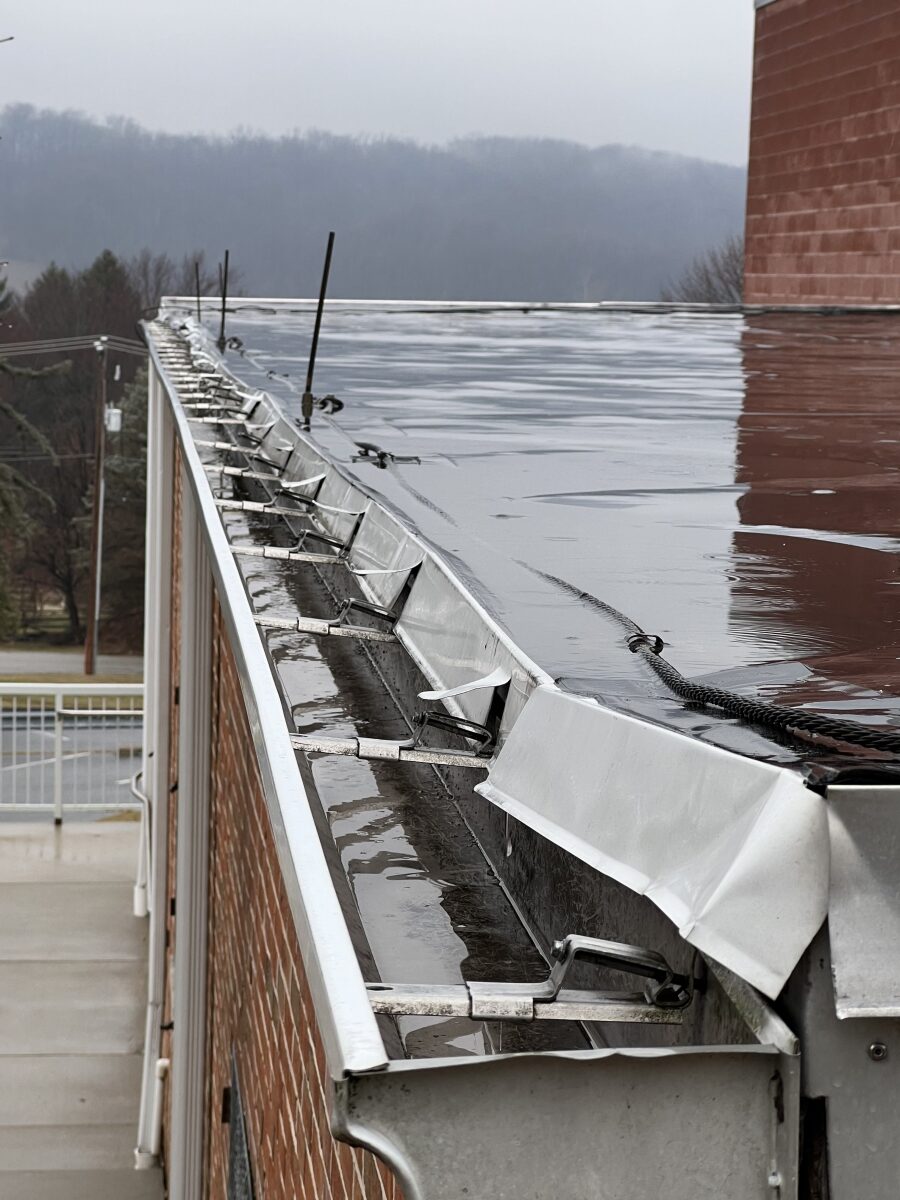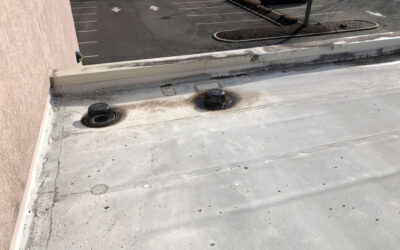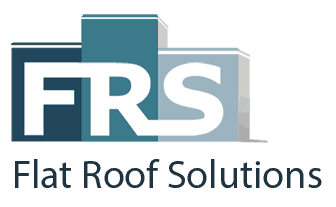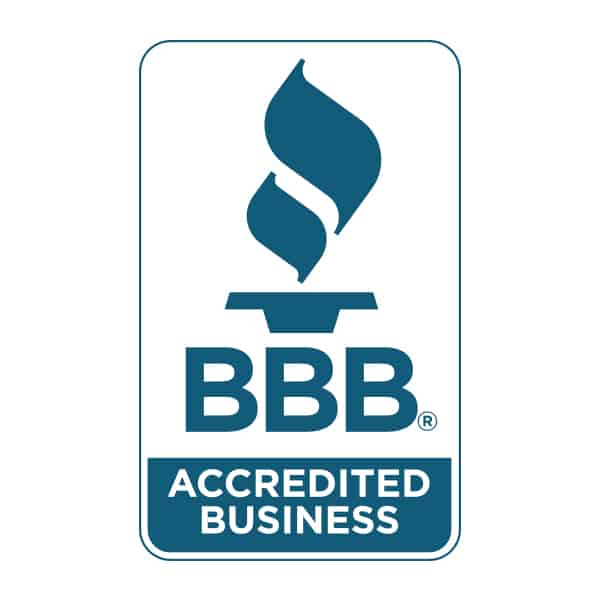Can you use residential or “house gutters” with a commercial flat roof system?
Residential (House) Gutters
Most of the gutter systems we see on flat roofs are residential or “house gutters.” These are seamless gutters produced, often on-site and in a gutter fabrication trailer, by a gutter contractor.
There is nothing inherently wrong with this style of gutter. The problems we typically encounter are the result of using them in conjunction with a flat roof system.
Standard residential gutters are “U” shaped and mounted to the wall. On a shingled residential roof, the shingles are angled towards the gutter and overhang it, so the water falls into the gutter. On a flat roof, there is no overhang. The water has to run down the face of the drip edge before it can gain entry to the gutter and drain away.

The seam or joint where drip edges and gutters meet is usually the source of the problems. Wind can drive at the joint and cause severe uplift. We have seen water back up and leak into the building at the drip edge of the gutter. This can happen in the winter when snow and ice melt.
Commercial Flat Roof Gutters
A better way to install a gutter on a flat roof system is to incorporate the gutter with the drip edge so there is no seam.
The gutters we install are all one piece. They function as both the drip edge and gutter. The gutter has a flange that sits on top of the roof. The membrane folds into the gutter, and we use a termination bar with heavy-duty brackets to secure the roof system in place.
This system is much better for three reasons:
A Counter Argument
A gutter contractor might take issue with this design. He or she could correctly point out that the proposed gutter system is not “seamless.” We suggest that it is because we have eliminated the seam that is the main point of failure – the seam where water has the potential to gain access.
This design is very unlikely to leak at the seam. The gutters we use are .040” aluminum (with an option to use .050”) and assembled with splice plates, mastic tape, and rivets. These gutters are heavier gauges than what you typically find in the seamless, residential housing market. Gutters in the seamless market are usually .027”, the thickest being .032”.
We also agree that the “seamless” gutter makes sense on a house or sloped roof because the water enters the gutter from an angle. The only spot left for a leak to occur is at a gutter seam.
In Conclusion
So, can you use a residential gutter on a commercial flat roof system? Yes. We see it all the time. We also don’t recommend it because flat roofs don’t have sufficient slope to facilitate proper water drainage and they are prone to wind uplift which can lead to backups and leaks. Instead, we recommend a one-piece drip edge and gutter system that blocks the wind and holds more water than regular house gutters.
Feel free to fill out our contact form or give us a call (610-881-6155) if you’d like more information.











Add your first comment to this post